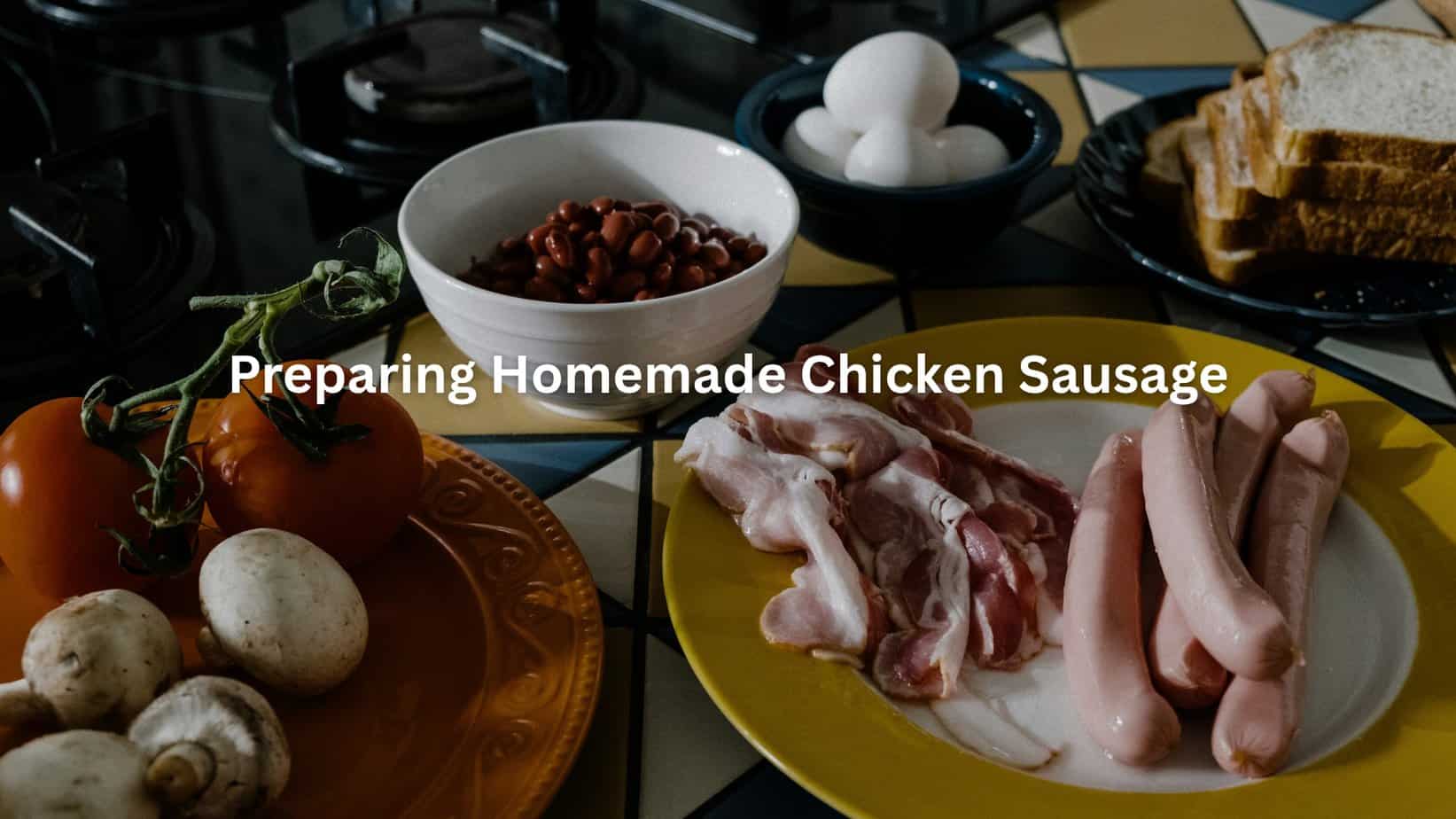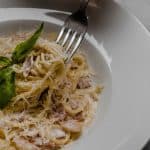Chicken sausage is having a moment—no longer a bland “diet” substitute, but a flavorful, smart swap for anyone who craves sausage without the heaviness of pork. Made from ground chicken blended with herbs and spices, this sausage manages to offer that classic, satisfying bite while cutting down on fat and calories. Whether you find it fresh, smoked, or fully cooked, chicken sausage slides easily into everything from morning omelets to hearty pasta dinners.
But don’t be fooled by its healthy reputation—labels matter. Some brands sneak in sodium, fillers, or preservatives, so a closer look at the ingredients list is always worth your while [1]. Still, the appeal is clear: chicken sausage delivers protein, familiar flavors, and surprising versatility, all with a lighter nutritional footprint.
Key Takeaway
- Always cook chicken sausage to at least 165°F for safety and best texture.
- Air frying and oven baking give easy, crispy results and work for large batches.
- Homemade sausage comes out best with chicken thighs (skin on), proper seasoning, and brief resting before cooking.
Cooking Store-Bought Chicken Sausage
Sometimes, walking home from class, the smell of grilling meat drifts across the quad and I think about how easy it is to mess up sausage. Chicken sausage, especially, gets a bad rap—dry, bland, rubbery. It doesn’t have to be. The key to getting chicken sausage done right is mastering internal temperature and timing.

Source: How To Cook Great
Safety and Cooking Principles
Internal Temperature Requirements
Chicken sausage is lean meat. Not forgiving. The USDA says to cook it to an internal temperature of 165°F [2]. Anything less, you risk bacteria. Anything more, you risk sawdust. Use a meat thermometer. Check the thickest part of the link.
Importance of Even Cooking and Turning
Ever seen a sausage split down the side? Usually means the outside cooked way faster than the inside. Turn them—don’t just let one side sit and blister. Even heat. Even browning. Flip every few minutes, whether you’re using a sheet pan, air fryer, or skillet.
Optimal Cooking Methods
I’ve tried every shortcut. Honestly, a few methods make a big difference, depending on your setup and how many sausages you’re cooking.
Oven Baking
- Temperature and Time:
Set the oven to 375°F. Lay sausages in a single layer on a sheet pan lined with parchment paper (or foil, if you’re out). Bake for 18 to 30 minutes, turning halfway. Thicker links take longer.
- Benefits for Batch Cooking:
If you’re feeding more than two, baking is the way. You can fit a dozen sausages, plus green beans or bell peppers, on the same pan. Easy meal prep, easy cleanup.
Air Frying
- Temperature and Duration:
Preheat air fryer to 400°F. Spray the basket with olive oil or avocado oil. Lay sausages in a single layer. Cook for 6 to 9 minutes, turning once. They’ll be crisp outside, juicy inside.
- Achieving Crispy Skin:
Air frying is quick. Hot air gives the skin that snap you want in a sausage. Works best with pre-cooked links but is fine for raw—just check the internal temp.
Skillet Cooking
- Heat Control and Browning Techniques:
Use a cast iron or heavy frying pan over medium heat. Add a little oil. Brown sausages on all sides, turning every 2–3 minutes. Use a cast iron or heavy frying pan over medium heat. Add a little oil. Cook chicken sausage in pan evenly by turning every 2–3 minutes for consistent browning and juicy texture. For raw sausage, add a splash of water, cover, and steam for 5 minutes so the inside cooks before the outside dries out.
Grilling
- Preparing and Managing Heat:
Preheat grill to medium-high. Oil the grates. For juicy sausage, indirect heat is better at first, then finish over direct heat to crisp the skin.
- Turning Frequency for Even Cooking:
Turn sausages every 3–4 minutes. You want color, not char. Takes about 15–20 minutes, depending on thickness.
Handling Pre-Cooked vs. Raw Sausages
Heating Through Pre-Cooked Sausages
Pre-cooked chicken sausage only needs reheating and a little browning. Five minutes in the air fryer, seven in a skillet, or ten in the oven. Just until steaming hot and golden.
Fully Cooking Raw Sausages
Raw sausage? Be patient. Cook low and slow at first to bring the interior up to temp, then finish hot for color. Always check the middle—no pink left.
Preparing Homemade Chicken Sausage

The first time I made sausage from scratch, the kitchen looked like a freshman dorm after finals—but the result was worth it. Homemade chicken sausage gives you control over everything: seasonings, texture, fat. But it lets you experiment with your own versions of chicken and sausage healthy recipes right from scratch.
Ingredients Selection and Preparation
Choice of Meat: Chicken Thighs with Skin
Chicken breast is too lean. Thighs with skin add the fat you need for juicy sausage. Use about 2 pounds for a batch. Dice into cubes for grinding.
Seasonings and Flavor Enhancers
Basic: kosher salt, black pepper, garlic. Add red pepper flakes for heat, sage or parsley for freshness, or even sweet apple for a breakfast twist. Measure carefully: 1.5 teaspoons salt per pound, a teaspoon of herbs, and a pinch of pepper.
Use of Binders for Texture
Some add a tablespoon or two of fine cornmeal or flour for a firmer bite, especially in patties. Not required, but helps if your sausage feels loose.
Casings or Patty Formation Options
Traditionalists use hog casings (soak in water, rinse inside and out). No casing? Shape into patties or logs and wrap in plastic wrap to chill.
Sausage Making Process
Grinding Techniques and Temperature Control
Use a meat grinder, or food processor in a pinch. The colder, the better—chill your bowl and blade. Warm fat smears, and that means crumbly sausage.
Mixing Thoroughly for Proper Binding
Salt helps the meat proteins bind. Mix by hand until the ground meat looks sticky and holds together if you squeeze it.
Stuffing or Shaping Sausages
Don’t over-stuff casings; leave some room for expansion. Twist into links every 4–5 inches, or just leave as coils.
Resting Time and Storage Guidelines
Let the sausage rest in the fridge (wrapped tight) for at least 2 hours, preferably overnight. This helps flavors meld. Homemade sausage can be stored in an airtight container for up to 5 days or frozen for up to 3 months.
Cooking Homemade Sausage
Pan-Frying Instructions
Medium heat. A little oil. Brown for 4 minutes per side. If thick, add a splash of water and cover to steam the center.
Baking Parameters and Techniques
Bake at 375°F for 25–30 minutes, turning halfway. Good for patties and links alike.
Grilling Recommendations
Medium-high heat. Oil grates. Grill 15–20 minutes, turning every 4–5 minutes.
Air Fryer Usage
400°F for 9 minutes, flip halfway. Watch the sizzle. They crisp up fast.
Boiling Followed by Browning Method
Simmer sausages first (10 minutes in barely bubbling water), then brown in a hot pan or under the broiler. Keeps sausage juicy, especially without a casing.
Tips to Achieve the Best Results
- Use a meat thermometer: Never guess. 165°F is the magic number for safety and texture.
- Avoid overcrowding: Whether in a skillet, air fryer, or oven, give sausages room to brown. Crowding steams them, and that means pale, soggy links.
- Customize flavors: Add finely chopped herbs, a little grated apple, or a dash of smoked paprika. Chicken sausage is a blank canvas.
- Rest after cooking: Wait five minutes before slicing. Juices settle, sausage stays moist.
Additional Considerations for Preparation and Serving
Flavor Pairings and Complementary Ingredients
Some things just go together. Try:
- Green beans, bell pepper, or butternut squash roasted on the same sheet pan.
- Red pepper flakes and sage for a breakfast sausage vibe.
- Mustard, aioli, or spicy ketchup on the side.
Serving Suggestions Across Meals
Chicken sausage is a great protein option for:
- Breakfast: With eggs or in a breakfast burrito.
- Lunch: In a bun like a hot dog or sliced into a salad.
- Dinner: Over rice, tossed with pasta, or layered in a sheet pan bake.
Storage and Reheating Best Practices
- Store cooked sausage in an airtight container in the fridge for up to 4 days. Freeze for up to 2 months.
- Reheat gently in a skillet with a splash of water, or in the microwave covered with a damp paper towel. This keeps them from drying out.
Conclusion
Chicken sausage can be quick and easy, but pay attention to a few details. Use a meat thermometer, don’t crowd your pan, and let the sausage rest after cooking. If you make your own, chicken thighs with skin give you the best texture and flavor. Whether you bake, air fry, grill, or pan-sear, focus on even heat and doneness. Try different seasonings, experiment with veggies on the side, and use leftovers for meal prep. Serve hot, and don’t be surprised when you reach for another link.If you love cooking, or just want a better dinner this week, start with these steps. Your next chicken sausage will be the best you’ve made yet.
FAQ
What’s the best cooking method for getting crispy skin on chicken sausage?
To get crispy skin on chicken sausage, try cooking chicken sausage in the air fryer or use a skillet over medium heat. For oven lovers, place the chicken sausage links on a baking sheet lined with foil or parchment paper and bake chicken sausage until golden. Each method works, but the air fryer chicken sausage comes out especially crisp. Just keep an eye on cook time, which can vary depending on the thickness.
Can I use a slow cooker for raw chicken sausage, or does it need to be pre cooked?
You can use a slow cooker for raw chicken sausage, but it helps to brown it in a skillet over medium heat first to boost flavor. If using pre cooked chicken sausage, toss it in with veggies like bell pepper or butternut squash for a hearty main dish. Cook times vary, so check the internal temp to make sure it’s safe.
What’s the best way to cook chicken sausage in the oven without drying it out?
To keep chicken sausage in the oven juicy, preheat the oven to 375 degrees Fahrenheit. Place the chicken sausages on a baking sheet lined with aluminum foil or parchment paper. Bake chicken sausage, turning occasionally, for even browning. Total cook time depends on the thickness. Sweet italian chicken sausage or apple sausage taste great with this method.
How do I make chicken sausage in the air fryer without it sticking?
Place the chicken sausages in an air fryer basket and cook at 360 degrees Fahrenheit. To avoid sticking, lightly spray the air fryer basket or use parchment paper and place the sausages spaced apart. Air fried chicken sausage gets crispy and cooks fast—usually 10–15 minutes depending on the thickness. Turning occasionally helps cook evenly.
What are some easy ways to use leftover chicken sausages in meals?
Leftover chicken sausages are a great option for chicken recipes like scrambled eggs, skillet meals, or tossed with red bell pepper and pasta. Chop them up with butternut squash or other veggies. Whether you use sweet italian chicken sausage or air fried chicken sausage, it’s an easy way to add protein to any dish.
How do I cook raw chicken sausage without drying it out?
For raw chicken sausage, use a skillet over medium heat and cook chicken sausages slowly. You can also try sausage in the oven, baking at 375 degrees Fahrenheit with foil or parchment paper. Another tip: cook raw chicken sausage in the air fryer for 12–16 minutes depending on the thickness. Always check internal temp.
What’s the difference between cooking chicken sausage and pork sausage?
Pork sausage usually has more fat, so it stays moist even with higher heat. Chicken sausage, made with chicken meat, is leaner and needs gentler cooking. Whether it’s italian sausage or sweet italian chicken sausage, use a lower cook time and watch closely. Add crushed red pepper or bell pepper for flavor.
How do I make chicken sausage a main dish?
Chicken sausage makes a great main dish when served with roasted veggies like red bell pepper, sweet potatoes, or butternut squash. Try grilled chicken sausages or use the air fryer oven for a quick dinner. Pre cooked or fresh sausage both work depending on the cooking method. Add a side of grains or salad.
Can I use an air fryer oven to cook chicken sausage recipes?
Yes! An air fryer oven is perfect for cooking chicken sausage recipes. Place the chicken sausages in the air fryer basket and cook until they’re golden with crispy skin—usually 12–15 minutes depending on the thickness. Try different air fryer recipes with sweet italian chicken or apple sausage for variety.
What are expert tips for cooking chicken sausage links evenly?
Use these expert tips: First, preheat the oven or air fryer. Then, place the chicken sausage links on parchment paper and place on a baking sheet or air fryer basket. Turn them occasionally for even browning. Don’t overcrowd. Cooking chicken sausage is all about airflow, even heat, and the right cook time.
REFERENCES
- https://www.fsis.usda.gov/food-safety/safe-food-handling-and-preparation/food-safety-basics/safe-temperature-chart
- https://www.allrecipes.com/article/is-chicken-sausage-healthy/?utm_source=chatgpt.com
RELATED ARTICLES
- https://milkwoodrestaurant.com/how-to-chicken-sausage-done/
- https://milkwoodrestaurant.com/how-to-cook-chicken-sausage-in-pan/
- https://milkwoodrestaurant.com/chicken-and-sausage-healthy-recipes/
Was this helpful?

I’m Mary R. Q. , a seasoned professional chef dedicated to elevating home cooking experiences. Through my expertise in the culinary arts, I provide practical cooking tips and insightful reviews of kitchen utensils on my blog, milkwoodrestaurant.com. As a passionate advocate for transforming everyday meals into extraordinary culinary adventures, I aim to empower home cooks with the knowledge and tools they need to create delicious and memorable dishes. I’m also an author of the book “1,001 Kitchen Tips & Tricks: Helpful Hints for Cooking, Baking, and Cleaning (1,001 Tips & Tricks)” which is sold on Amazon. Join me on a flavorful journey as we explore the art of cooking and the essential tools that make it a joy.








